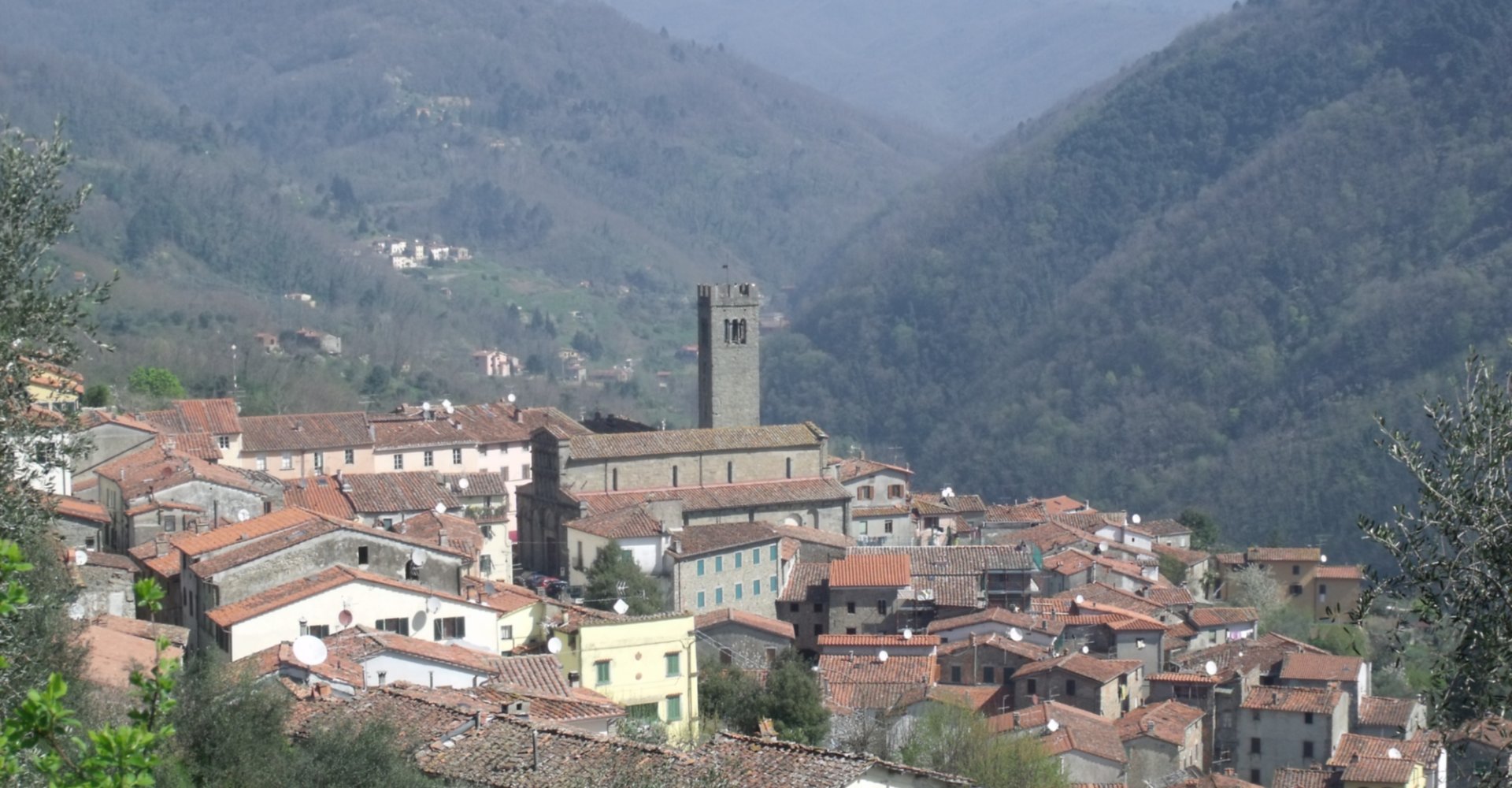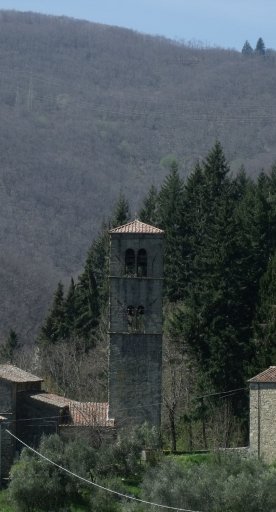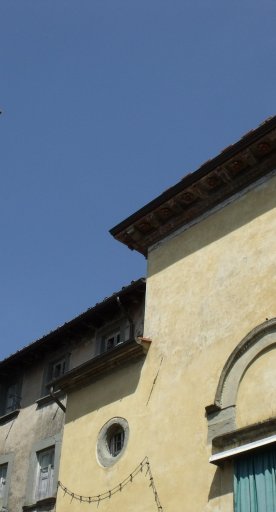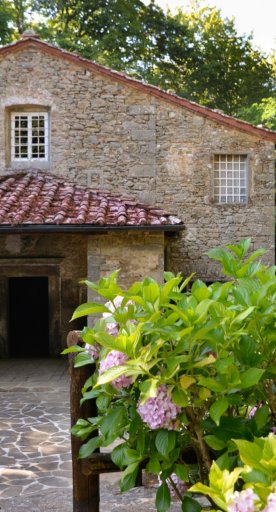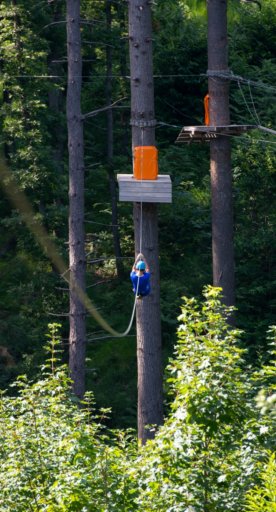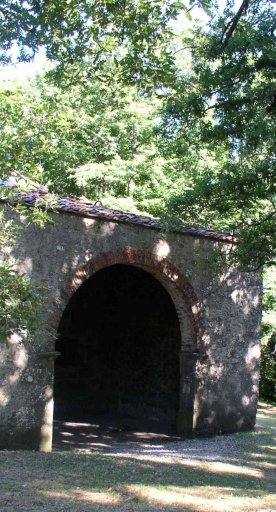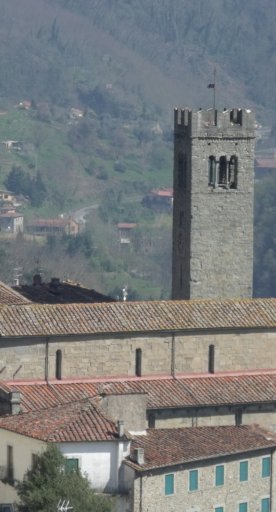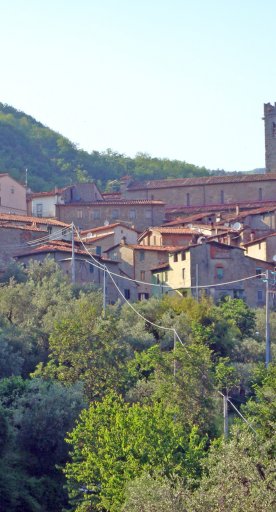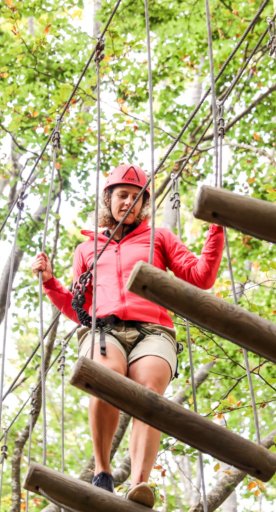Villa Basilica
Near Lucca: the land of swords and paper
The little town of Villa Basilica stands on the slopes of the Pizzorne highlands, halfway between Lucca and Pistoia and near Collodi, the birthplace of Pinocchio. The town consists of a small bunch of houses, alleyways and piazzas, unique in style.
Rivers and streams are constantly tumbling down over these hills, where the ironworking industry has always flourished as a result. Gunsmithing was a particularly dominant activity here, making Villa Basilica a reference point for armies and private aristocratic bodyguards, who would come here for swords and other bladed weapons. Another craft, equally old and equally connected to the abundance of water here, is paper making.
What to see in Villa Basilica
Walking its streets is the best way to breathe in the atmosphere of Villa Basilica, but you can also survey the entire village as a whole. If you climb up to the citadel, which commands a view over the whole territory, you will be able to see the entire valley.
If you are looking for a beautiful panorama, another great place to head is the large square next to the town's cathedral. Legend has it that the Emperor Charles V enjoyed the beauty of the underlying plain from this square.
Without a doubt, the main point of interest in the historic centre is the twelfth-century church of Santa Maria Assunta, which contains a thirteenth-century crucifix attributed to Berlinghiero Berlinghieri. Palazzo Biscotti is another building to have played a part in the town's history: its name comes from a family who had an pivotal role in the story of this area.
Walking its streets is the best way to breathe in the atmosphere of Villa Basilica, but you can also survey the entire village as a whole. If you climb up to the citadel, which commands a view over the whole territory, you will be able to see the entire valley.
If you are looking for a beautiful panorama, another great place to head is the large square next to the town's cathedral. Legend has it that the Emperor Charles V enjoyed the beauty of the underlying plain from this square.
Without a doubt, the main point of interest in the historic centre is the twelfth-century church of Santa Maria Assunta, which contains a thirteenth-century crucifix attributed to Berlinghiero Berlinghieri. Palazzo Biscotti is another building to have played a part in the town's history: its name comes from a family who had an pivotal role in the story of this area.
Nearby
The hamlet of Boveglio, which lies within the municipality of Villa Basilica, is full of medieval, Renaissance and nineteenth-century buildings, all magnificent. In the uppermost part of the old inhabited centre, the massive clock tower stands on an embankment, behind a solid wall. Surveying the surroundings, it almost serves as the hamlet's guardtower.
The nearby hamlet of Colognora Valleriana is also of interest, especially to linguistics students and researchers, who come here from every conceivable corner of Italy. A unique heterogeneous dialect is spoken here, a mixture of Emilian, Romagnolo, Ligurian and Lombard influences and expressions.
Numerous villas and country residences pop up across the Lucca plain, relics of days bygone. Surrounded by hills, these true rural palaces are the work of rich Lucchese merchants from the fifteenth century onwards: all of them are sumptuous homes, encircled with blooming gardens. Particularly spectacular examples include Villa Grabau, Villa Reale, Villa Torrigiani and Villa Mansi.
The hamlet of Boveglio, which lies within the municipality of Villa Basilica, is full of medieval, Renaissance and nineteenth-century buildings, all magnificent. In the uppermost part of the old inhabited centre, the massive clock tower stands on an embankment, behind a solid wall. Surveying the surroundings, it almost serves as the hamlet's guardtower.
The nearby hamlet of Colognora Valleriana is also of interest, especially to linguistics students and researchers, who come here from every conceivable corner of Italy. A unique heterogeneous dialect is spoken here, a mixture of Emilian, Romagnolo, Ligurian and Lombard influences and expressions.
Numerous villas and country residences pop up across the Lucca plain, relics of days bygone. Surrounded by hills, these true rural palaces are the work of rich Lucchese merchants from the fifteenth century onwards: all of them are sumptuous homes, encircled with blooming gardens. Particularly spectacular examples include Villa Grabau, Villa Reale, Villa Torrigiani and Villa Mansi.
Events
The festival of Santa Maria, which falls on 15 August, is very close to the hearts of the townspeople of Villa Basilica. The day is celebrated with events, historic re-enactments and an array of traditional dishes, like torta coi becchi, tortelli and maccheroni.
Festivals celebrating fungi and fried polenta come to the Pizzorne plateau in July and August respectively, as they have done for a great many years.
The festival of Santa Maria, which falls on 15 August, is very close to the hearts of the townspeople of Villa Basilica. The day is celebrated with events, historic re-enactments and an array of traditional dishes, like torta coi becchi, tortelli and maccheroni.
Festivals celebrating fungi and fried polenta come to the Pizzorne plateau in July and August respectively, as they have done for a great many years.
Typical Dishes and Produce
The area's iconic dish is the appropriately named Torta di Villa Basilica, a rice cake decorated with puff pastry in the shape of triangles, which in dialect are known as becchi. The ingredients include pecorino cheese, pepper, spices and eggs. The Salviato di Villa Basilica is a dish that dates back a long way: another type of savoury pie, its main ingredients are new potatoes.
Villa Basilica is famed for producing chestnut flour and sweet flour, both of which are used to the exclusion of almost any other flour in the town's sweets and desserts (necci pancakes, frittelle and castagnaccio).
The area's iconic dish is the appropriately named Torta di Villa Basilica, a rice cake decorated with puff pastry in the shape of triangles, which in dialect are known as becchi. The ingredients include pecorino cheese, pepper, spices and eggs. The Salviato di Villa Basilica is a dish that dates back a long way: another type of savoury pie, its main ingredients are new potatoes.
Villa Basilica is famed for producing chestnut flour and sweet flour, both of which are used to the exclusion of almost any other flour in the town's sweets and desserts (necci pancakes, frittelle and castagnaccio).
